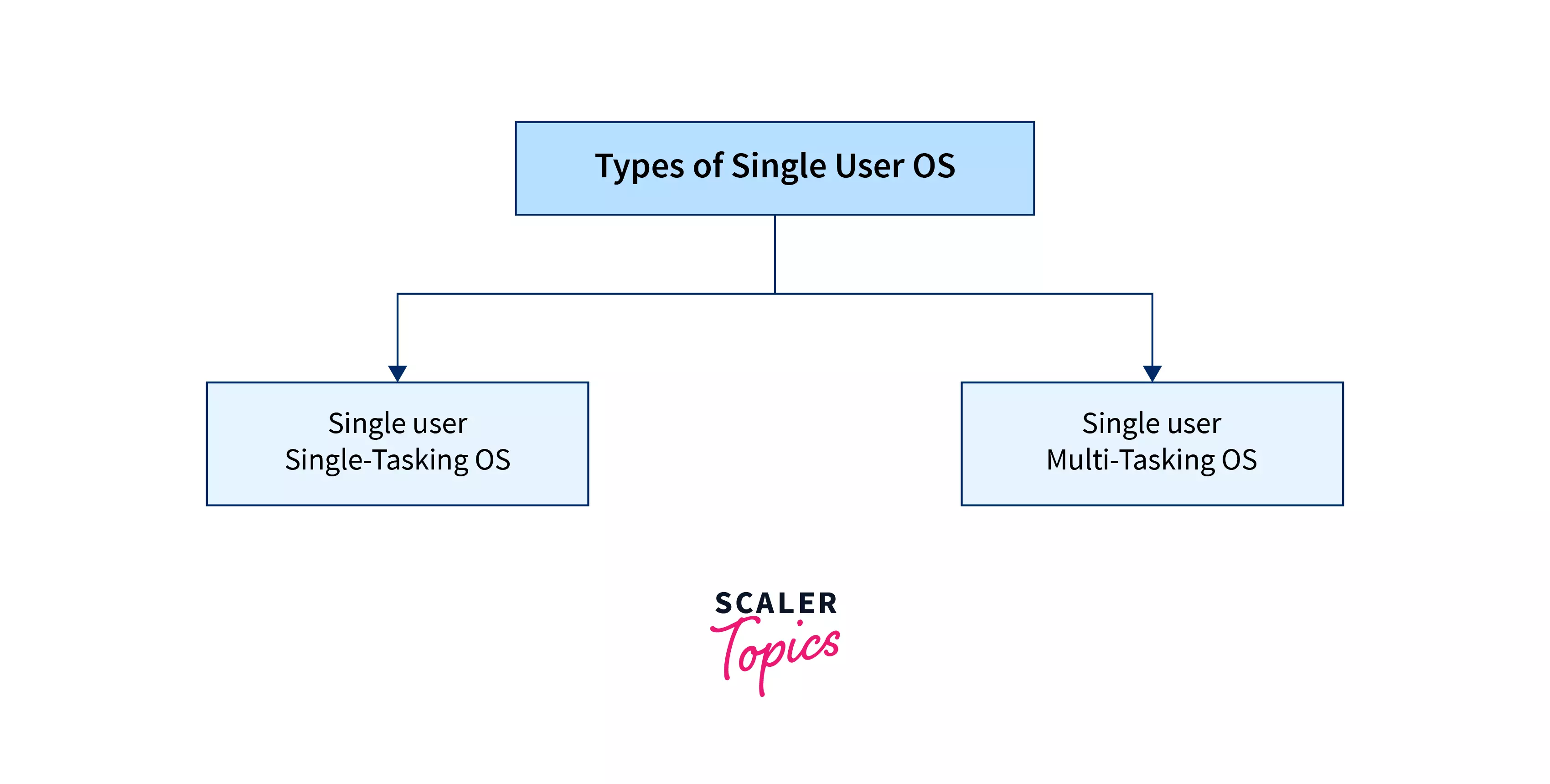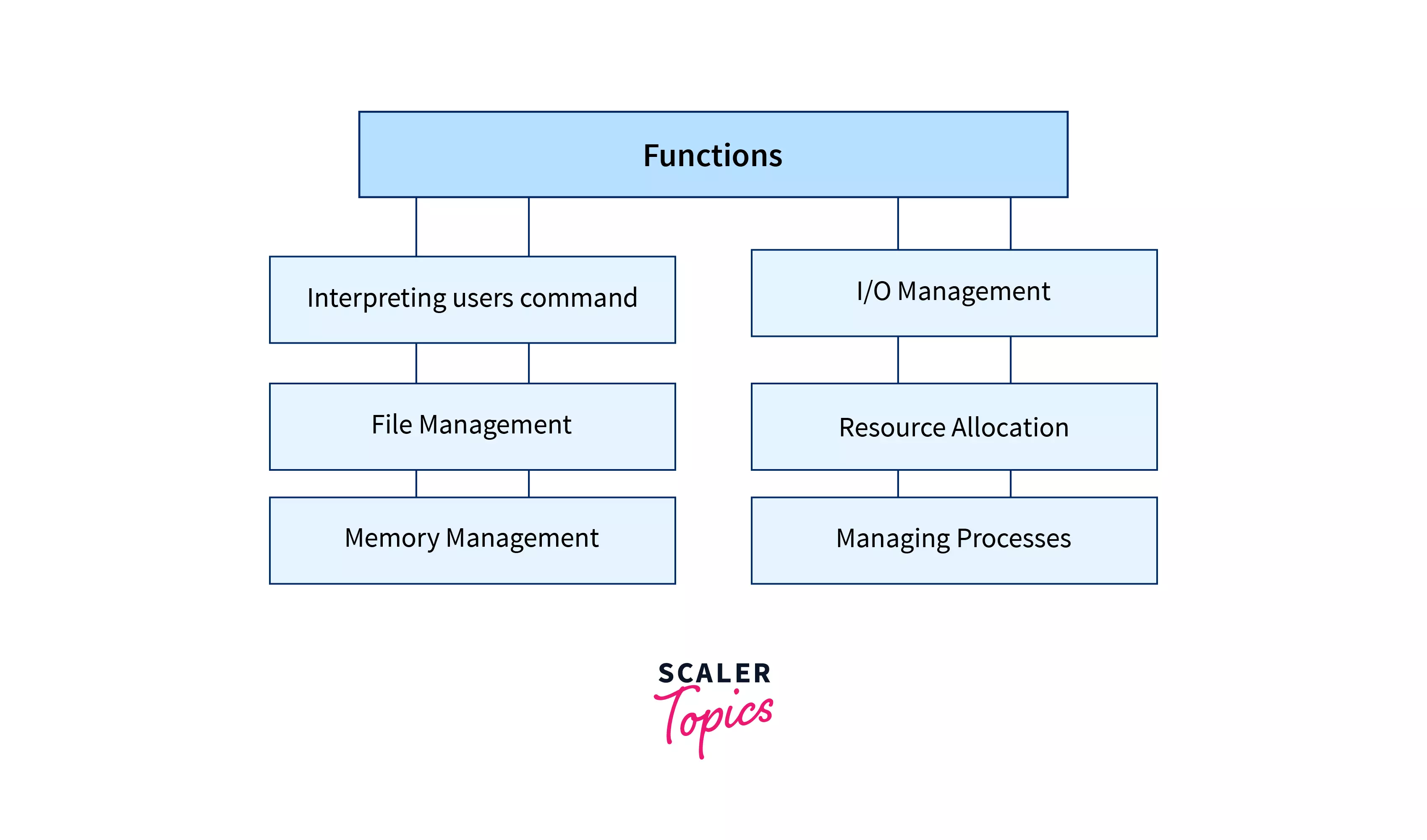Which of the Following is a Single User Operating System?
Overview
Before learning about the topic i.e. which of the following is a single-user operating system, let us first get a brief understanding of the operating systems and user(s).
Which of the following is a single-user operating system?
An Operating System is nothing but a software program that acts as an interface between the hardware, the application software, and users. The main aim of an operating system is to manage all computer resources. So, we can simply say that the operating system gives a platform to the application software and other system software to perform their task.
Refer to the diagram below to understand the value and working of the operating system.

Now, a single-user operating system is a type of operating system that allows a user (single user) to perform only one task at a time. The single-user operating system performs a single task at a time so it is also known as the Single-Tasking operating system.
Now, let us take the most commonly used operating systems and check which of the following is a single-user operating system?
1. Windows?
Yes, we can say that Microsoft Windows is a single-user operating system. We can perform multi-tasking in the Windows operating system but the multitasking can be performed by a single user at a time. So, Microsoft Windows can be referred to as a single-user, multi-tasking operating system.
2. Apple MacOS?
Yes, we can say that Apple MacOS is also a single-user operating system. Similar to Microsoft Windows, we can perform multi-tasking in the macOS operating system but the multitasking can be performed by a single user at a time. So, Apple macOS can also be referred to as a single-user, multi-tasking operating system.
3. Linux?
No, Linux is a multi-user multi-tasking operating system. There can be many users working simultaneously on a Linux machine. The Linux operating system is an example of a distributed operating system which simply means multiple users work on the same computer system.
4. Android?
No, Android is not a single-user operating system. Android creates separate log files for each user. So, whenever a user logs into the Android operating system, he/she will get a different home screen. The Android operating system also supports the switching between the various users of the operating system. The Android operating system is an example of a multi-user operating system.
5. Chrome OS?
No, Chrome OS is not a single-user operating system. The behavior of the Chrome OS is similar to the Android operating system. The Chrome OS is also an example of a multi-user operating system.
Apart from the Single User operating system, we have some other types of operating systems.
-
Batch processing operating system: A Batch operating system is the type of operating system in which the user(s) are used to prepare their instructions in the form of jobs on an off-line device like punch cards and submits them to the computer operator. Now, out of these punch cards, similar punch cards of jobs were grouped and run as a group to speed up the entire process.
-
Multiprogramming operating system: In the multiprogramming operating system, several jobs or processes can be loaded into the main memory simultaneously with the help of a single processor. Now, it was the duty of a subpart of the operating system called job scheduler to schedule these processes in such a way that maximum processes can be executed in minimum time.
-
Time-sharing operating system: In the time-sharing operating system, several jobs or processes can be loaded into the main memory simultaneously and several users can share the system as well. The name time-sharing was used because the processes used to share an equal amount of time specified by the operating system developer.
-
Parallel processing system: In the parallel processing operating system, there we more than one processor. So, several jobs or processes can be loaded into the main memory simultaneously and all the processors work concurrently on these processes.
-
Distributed System: In the distributed operating system, two or more nodes are connected. The distributed operating system is also known as loosely coupled operating system as various nodes are connected, but the memory or a clock is not shared by the processors. These nodes can communicate with each other using telephone lines high-speed buses, etc.
What are Single Operating Systems?
A single-user operating system is a type of operating system that allows a user (single user) to perform only one task at a time. The single-user operating system is developed to be used on a single system and to provide security to the user. As the name suggests, there will be only one user using the system at a time, so the user will be secured as his/her data and resources are not shared.
Refer to the image below to see the visual representation of the single-user operating system.

The single-user operating system does not mean that it can be used by a single user only, it simply means that the system will be used by a single user at a time. The single-user operating system can connect to other computers using networking.
We can broadly categorize the single-user operating system into two types, namely - Single User single-tasking operating system, and a single-user multitasking operating system.
Refer to the image below for visual representation.

Let us discuss the Single User single-tasking operating system, and single-user multitasking operating system briefly.
- Single User Single-Tasking operating system: As the name suggests, a Single User single-tasking operating system allows only one user to perform only one or a single task at a time. Since the operating system allows only tasks to be performed by a single user at a time, it consumes much less space in memory as compared to other operating systems. Now, due to less consumption of memory, the cost is also lesser than others.
Examples of Single User Single-Tasking operating systems are Palm OS, MS-DOS, etc.
- Single User Multi-Tasking operating system: As the name suggests, a Single-user single-tasking operating system allows only one user to perform multiple tasks at a time. Since the operating system allows various tasks to be performed by a single user at a time, it is highly productive and saves a lot of time as well. Due to multiple tasks running in parallel, the memory consumption is also less.
Examples of Single User Multi-Tasking operating systems: Linus, Microsoft Windows, Google Android, Apple macOS, etc.
Refer to the image below to see the various functions of the single-user operating system.

What are the features of a Single-user Operating System?
After learning, which of the following is a single-user operating system. Let us now see why should we use the single-user operating system or what are the features of the single-user operating system.
- As there is a single user and single task, we do not need to use any kind of scheduling algorithm for input-output operation.
- The single-user operating system is dedicated to a single user hence, the data of the user and his/her resources are not shared.
- There is no need for a Memory Management Unit as there is a single process running in the single-user single-tasking operating system.
- The single-user operating system is also easy to maintain as the user uses very less resources. Due to the less resource usage, the complexity is also less hence the maintenance and debugging are easier.
- As there is a single user so the requests are low and hence the chance of damage to hardware and software is also less.
Example of Single User Operating System
Previously we have learned - which of the following is a single-user operating system, let us now summarize the topic with examples of single-user operating systems.
List of single-user operating systems:
- MS-DOS,
- Windows 3x,
- Windows 95,
- Windows 97,
- Windows 98.
- Macintosh OS.
:::{.highlight} Note: Some of the multi-user operating systems are: Windows 2000, Linux, Ubuntu, Unix, Mac OS X, Windows 10, Windows 11, etc.
:::
Learn More about Operating System
As we have a good understanding of the topic: which of the following is a single-user operating system? To learn more about the operating systems, refer to the below article:
Conclusion
- A single user operating system allows a user (single user) to perform only one task at a time. The single-user operating system performs a single task at a time so it is also known as the Single-Tasking operating system.
- The single-user operating system is developed to be used on a single system and to provide security to the user.
- The single-user operating system does not mean that it can be used by a single user only, it simply means that the system will be used by a single user at a time.
- A Single User single-tasking operating system allows only one user to perform only one or a single task at a time. Example: Palm OS, MS-DOS, etc.
- A Single-user single-tasking operating system allows only one user to perform multiple tasks at a time. Example:: Linus, Microsoft Windows, Google Android, Apple macOS, etc.
- The single-user operating system is easy to maintain as the user uses very less resources. Due to the less resource usage, the complexity is also less hence the maintenance and debugging are easier.
- As there is a single user the requests are low and hence the chance of damage to hardware and software is also less.
